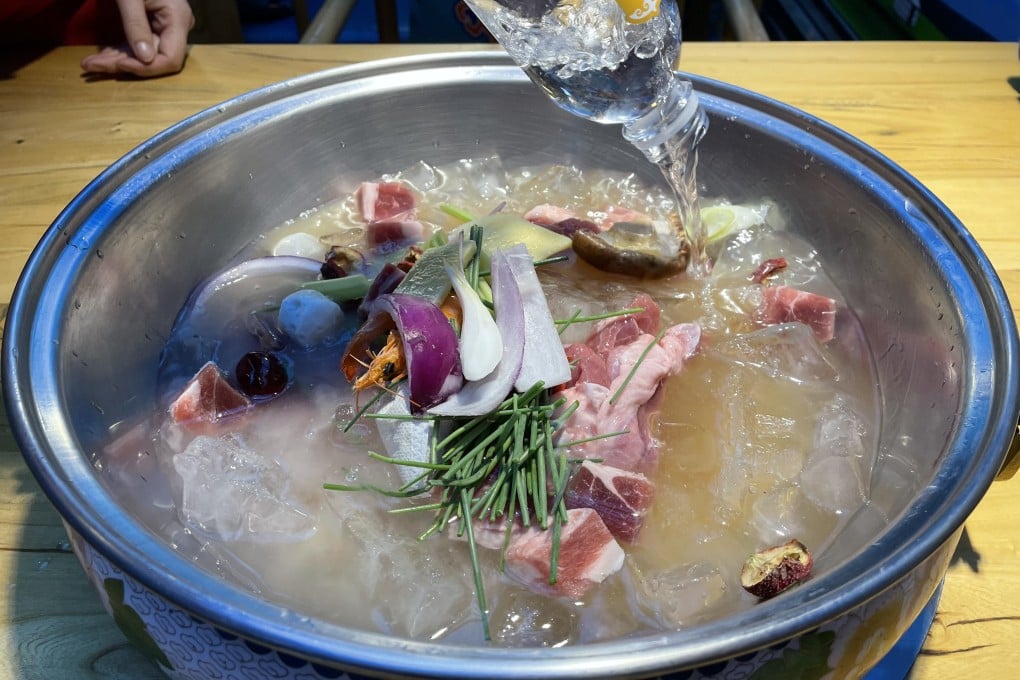Chinese food for winter: how dishes like hotpot, dumplings and sweet desserts keep people warm in northern China’s freezing conditions
- Sheep meat is popular in China’s north during winter, in dishes such as sheep spine hotpot that can taste quite different than their southern counterparts
- Stewed pears with red wine, and mashed Chinese yam with blueberry sauce, are two desserts widely eaten that have Chinese medicinal properties

Winter in the north of China is harsh and gruelling with temperatures falling far below zero, but eating warming food helps northerners ride out the freezing conditions.
One of the dishes that most typically represents winter in China is dumplings. Dumplings were invented by Zhang Zhongjing, a doctor in the Eastern Han dynasty (AD25-AD220), as a tonic to protect his patients’ ears from frostbite, using Chinese herbs selected to improve the blood flow. He called the dumplings jiao’er, or tender ears. He made jiao’er by boiling mutton, chilli and Chinese herbs together and mincing them before wrapping the filling in dough.
There are many dumpling specialist shops in the north of China. One of the biggest chains is Xi Jia De, which has around 600 outlets in China. Founded in the city of Hegang in Heilongjiang province in 2002, the chain features open kitchens where customers can see their dumplings being made with fresh ingredients.
Instead of giving customers a lot of choices, Xi Jia De sells only five kinds of boiled dumplings, including pork and mushroom; sea cucumber, pork and dried shrimp; and egg, shrimp and Chinese chives. Customers can use garlic, chilli and vinegar to mix their own sauce.


We tried all five choices and loved them all for their thin wrappers, fresh ingredients and being MSG-free. Costing around 30 yuan (US$5) a plate for 12 dumplings, the affordable price makes the restaurant popular with customers in winter.
